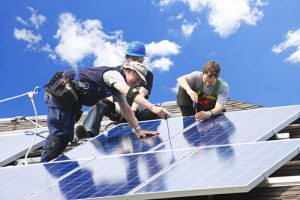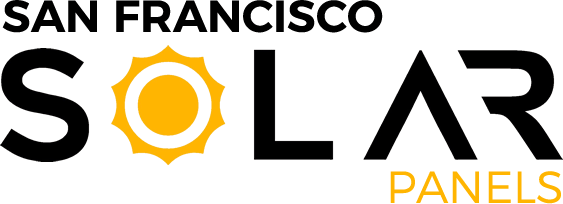Solar Panel Installation Company, San Francisco CA
The popularity of so-called green energy is growing every day. More and more people are striving to install energy-saving technologies in their homes and methods of their production. The undisputed leader in the production of renewable energy is solar energy and solar panels as their converters to electricity. After carrying out elementary mathematical calculations, it becomes clear that the use of solar panels for your home is a profitable investment, and this benefit will grow every year.
What are solar panels? 
Their main property is the conversion of sunlight into electrical energy. In fact, these are photovoltaic modules that make up your entire solar power station. Solar cells are combined with photovoltaic modules external consumers are connected to which. However, solar panels are just one of several components of the entire home power station.
How it works
The whole principle of operation is quite simple, photons of light fall on solar panels, as a result of a collision with the surface of a semiconductor, photons transfer energy to electrons of this semiconductor. The rest of the electrons are knocked out of the semiconductor as a result of this light bombardment. Overcoming the protective layer, they generate additional energy. Here we can see the cyclical method of energy conversion. When electrons pass from an n-conductor to a p-conductor, electricity is generated and then the reverse maneuver is performed. The transfer of electrons is facilitated by the electric field that is present in the conductors, as a result of which it significantly increases the difference and the strength of the charge of electrons.
The entire system consists of solar cells enclosed by a solar panel and a battery that serves as an accumulation of energy storage. The main principle of operation is the conversion of sunlight into electricity using solar panels and transferring it to the battery, which supplies your home with energy. All appliances in your home are connected to battery power, in which case you get energetic independence.
The power of your home power station depends on the number of solar panels, as well as the number of solar cells on those panels. An important power factor is the efficiency of solar panels. However, it is worth mentioning that the whole system is quite flexible and loyal to modernization, you can easily increase or decrease the capacity of your home power station by simply combining the number of solar panels.
What are the benefits of solar panels?
One of the key factors is the economic viability of investing in green energy in San Francisco, CA. Today, solar panels are not a luxury item for wealthy people, and in recent years there has been a real boom in the field of installing solar panels on the roof of residential buildings. Due to huge demand and an increase in industrial production, there is a sharp decline in prices for solar panels, batteries, and other components of a home power station.
However, solar panels are not mainstream just for green energy fans. It is also a very smart investment to keep your home energy stable and create passive income in the future. Here are just some of the benefits of using solar panels:
- Autonomous power supply
- Independence from power outages, as well as power surges that lead to a breakdown of household electrical appliances
- Savings on utilities, no need to pay for electricity
- Inexhaustible resources of light, which will not disappear in the near future
- A completely environmentally friendly product that is also quiet and highly reliable
However, one of the most important advantages of green energy for San Francisco, CA, is the ability to connect to a green tariff. In practice, it means that you can sell your surplus energy to a centralized electricity grid. This will lead to the creation of passive income and further accelerate the payback process of your home power station, and in the future will become your additional income.
Who is for
Before investing money in projects, each person must clearly understand why and for what he does it. To make your home power station profitable and as efficient as possible, there are four main factors to consider.
How much do you pay for electricity?
Perhaps this is the calculation from which you first need to start. You should determine how much you spend on electricity input in this and will be the whole financial sense. The main idea is to pay less in the future than you pay now.
What is the roof of your house?
You should inspect the roof of your house to see if you can place solar panels or not. And also inspect the roof for damage or various kinds of deformations. If you need a roof repair or replacement, do it now before you install the solar panels, otherwise, it will be more difficult to do later.
Is your roof getting enough light?
This is a question that relates to the efficiency of your home power plant. You need to know how much light there can potentially be on your roof, how many sunny days per year. Also pay attention to the location of your house, when the sun is at its zenith, it should directly hit your roof.
Climate
Pay attention to weather conditions throughout the year. What is the duration of winter, what is the duration of daylight hours. However, the efficiency of solar panels is increasing every year and they are now capable of producing enough electricity even in areas with frequent cloudy weather.
What about solar efficiency
Today, many examinations show that the efficiency of solar panels reaches 25%. Work is underway to constantly increase their efficiency by combining various materials and so on. Also, mention should be made of the significant service life of the solar battery. Solar panels based on silicon are quite reliable and can last up to 30 years without any repairs. This is the most significant factor in calculating financial literacy. Today, the average payback period for a solar home power station in San Francisco, CA, ranges from 3 to 7 years. It all depends on the amount of light, the length of daylight hours, as well as the green tariff to which they are connected.
